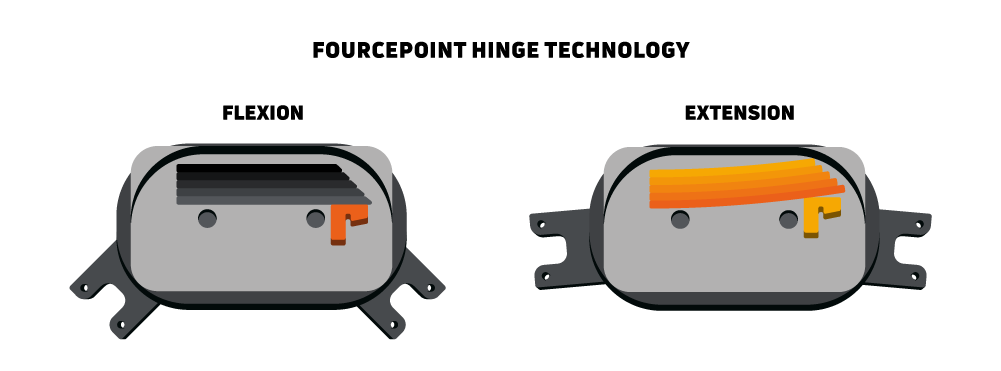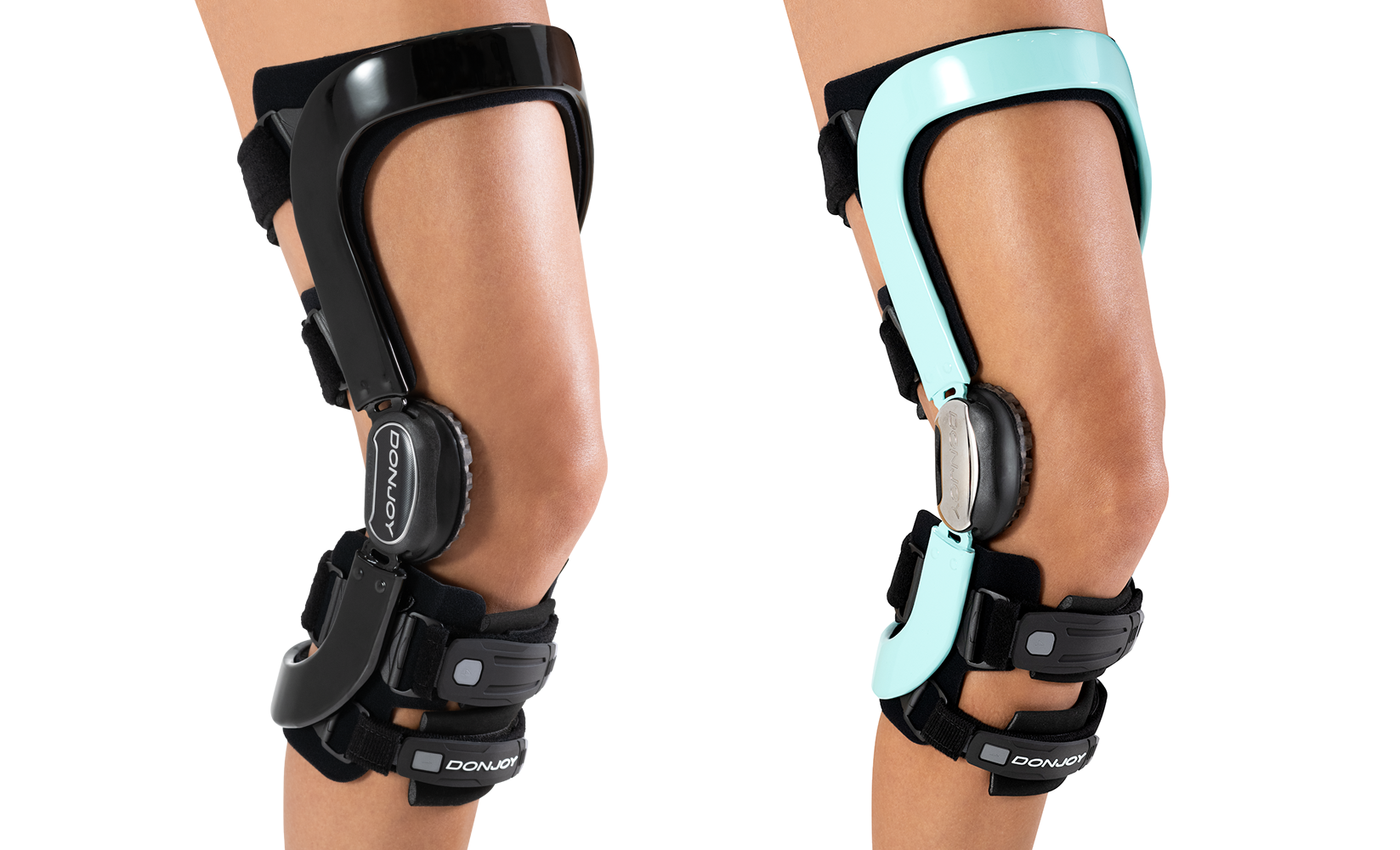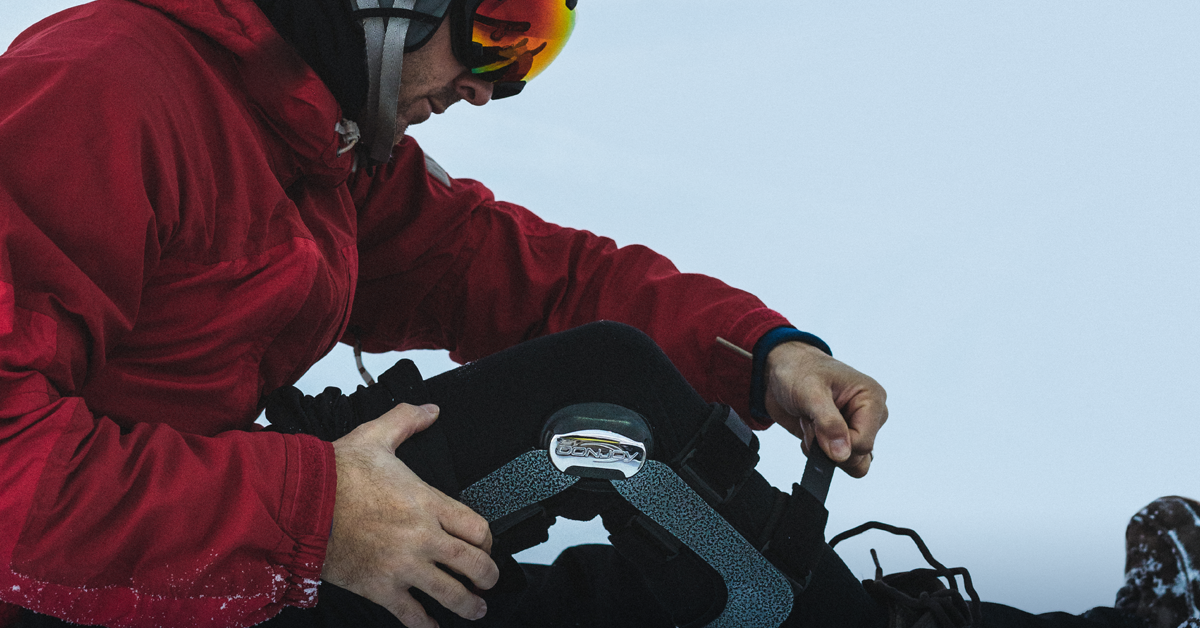As winter sports enthusiasts hit the slopes, the importance of protecting vulnerable joints cannot be overstated. For skiers and snowboarders, the rigors of downhill adventures can take a toll on the knees. Thankfully DonJoy® knee braces are clinically proven to protect the knee and safeguard against ligament injuries.1 Here are ten compelling reasons why skiers and snowboarders should consider wearing a DonJoy rigid knee ligament brace.
1. Dynamic Stability
The unpredictable terrain of snowy slopes demands dynamic stability. DonJoy knee braces feature the Four-Points-of-Leverage™ system, a combination of a rigid cuff and straps that provides a constant dynamic load and is clinically proven to reduce anterior cruciate ligament (ACL) strain.2

2. Prevent Ligament Injuries
The lateral movements and sudden stops inherent in skiing and snowboarding can put stress on knee ligaments, and when it comes to ligament injuries, prevention is better than any cure. DonJoy’s patented FourcePoint® Hinge keeps the knee out of the “at risk” position, helps prevent anterior tibial translation, and dampens knee joint extension, helping to protect the knee from injury.3

3. Post-Injury Protection
With a re-injury rate of 5-10% for people who have suffered an ACL injury, protecting the knee is essential.4 The Four-Points-of-Leverage technology featured on DonJoy knee braces effectively reduces ACL strain, which can be crucial during rehabilitation while the graft is remodelling.2
4. Enhance confidence
The protection offered by a DonJoy brace can give skiers and snowboarders the confidence to push their limits with greater assurance.
5. Important for women and young people
Of those who suffer ligament injuries, women and young people are the most susceptible. With 50% of ACL injuries occurring in 15-25 year olds,5 and women 8x more likely to injure an ACL,6 it is even more essential for them to wear a knee brace while skiing or snowboarding.
6. Unique braces made to measure
Every Defiance and A22® knee brace is made to the specific measurements of the customer’s leg for an even closer and more comfortable fit.
7. Off-the-shelf options for a fast fix
For customers not looking for a custom option, DonJoy offers a wide choice of off-the-shelf knee braces. Armor™ comes in 7 different sizes of thigh circumference for fast and simple measuring and ordering.
8. Customise your brace to suit
DonJoy’s Defiance knee braces offer a range of customisable features to suit customers. Along with optional accessories including a sports cover and silicone condyle pads, these braces are also available in over 30 frame colours and patterns.
9. DonJoy braces won’t get in the way
Thanks to their lightweight, low-profile design, DonJoy knee braces fit easily under ski trousers and snowboard pants. Many of the braces are also available in a short calf length to ensure boot clearance.
10. There’s more than just bracing
DonJoy knee braces are complemented by a huge range of medical devices provided by its co-brands in the Enovis™ organisation. Whether it is cold therapy products to reduce pain following injury, or electro muscle stimulation devices to aid in recovery, Enovis offers support for skiers and snowboarders throughout the continuum of care.
To learn more about DonJoy knee braces, visit enovis-medtech.eu
References
- Ackerman DR et al. Prophylactic Knee Bracing in Offensive Linemen of the National Football League: A Retrospective Analysis of Usage Trends, Player Performance, and Major Knee Injury. Orthop J Sports Med. 2023 Aug 25;11(8):23259671231191767.
- Fleming BC et al. The influence of functional knee bracing on the anterior cruciate ligament strain biomechanics in weightbearing and nonweightbearing knees. Am J Sports Med 2000;28(6):815-24.
- Yu B et al. Immediate effects of a knee brace with a constraint to knee extension on knee kinematics and ground reaction forces in a stop-jump task. Am J Sports Med 2004;32(5):1136-43.
- Arendt EA et al. Anterior cruciate ligament injury patterns among collegiate men and women. Journal of Athletic Training. 1999;34(2):86-92.
- Griffin LY et al. Understanding and Preventing Noncontact Anterior Cruciate Ligament Injuries: A Review of the Hunt Valley II Meeting, January 2005. American Journal of Sports Medicine. 2006 34:9. 1512-1532.
- Mancino F et al. Anterior cruciate ligament injuries in female athletes. Bone Joint J. 2023 Oct 1;105-B(10):1033-1037.










